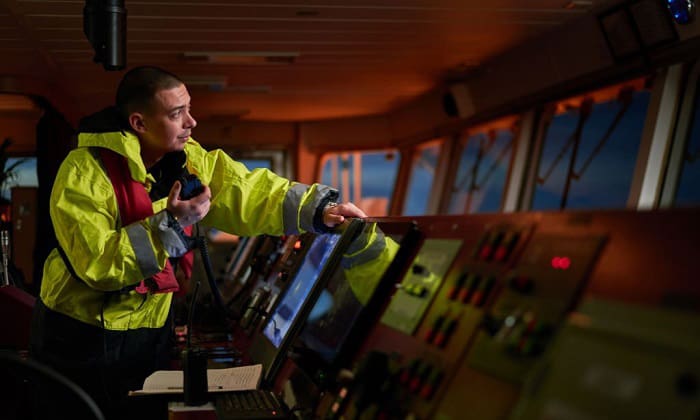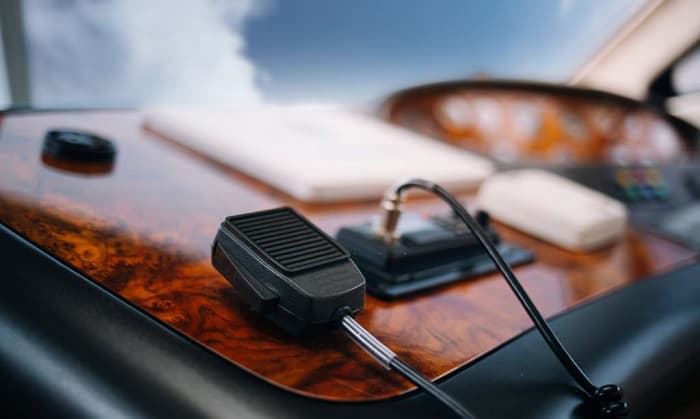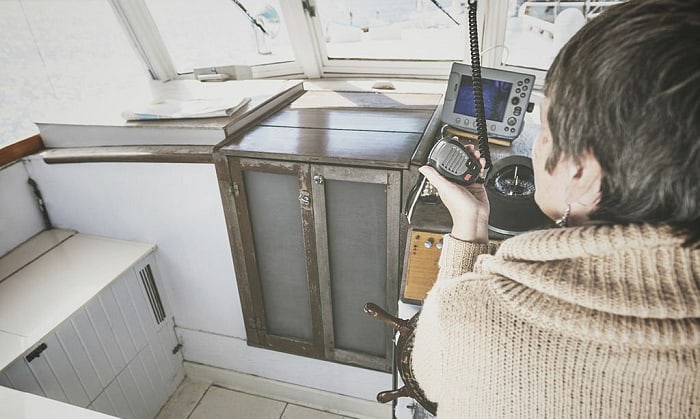The phrase “Mayday” may sound familiar to you as you might know them from Hollywood movies or series that involve watercraft. However, this is not only an usual line spoken by actors. In fact, when you hear this word from boat operators, some life-threatening situations are occuring on board.
Hence, understanding “when operating a VHF marine radio when should the term mayday be used?” is important for both boaters and boat enthusiasts. Using this code correctly will increase the chance of you and your passengers being rescued on time.
Therefore, if you are looking for a proper guideline on the way the term Mayday is used, this is the perfect place for you! In this article, we will compile all information about the phrase “Mayday” and provide detailed instructions to use it properly.
Furthermore, other tips on creating a Mayday call in emergency circumstances will be highlighted so boaters can save time and enhance their chance of staying safe. Continue reading to learn more!
Table of Contents
What Is “Mayday” and When Should You Use It
A Mayday signal means that lives and properties available on the boat are in serious danger. Hence, we really wish you will never have to use this term.
In circumstances of significant damage, risk of losing the boat, or life-threatening injuries of passengers, a Mayday call is required. A distress call made on Channel 16 should pursue a certain procedure to ensure that it is properly understood and has the relevant information to direct rescuers to your position as soon as possible.
However, remember that when you issue a Mayday call, the Coast Guard will respond with rescuers and support equipment. It takes a lot of planning and money, so ensure that you carefully examine your circumstances to prevent making a false alarm. If your situation is serious but not so life-threatening, a Pan-Pan call may be a better choice.
Therefore, it leads us to the question: When should you utilize Mayday if you’re planning to use a VHF maritime radio? Here are some examples for occasions that you will make Mayday calls:
- Medical emergencies: people fainted, losing blood, etc.
- Capsized boats
- Boat fire
- Vessels trapped in severe weather conditions
Making a Distress Call With Mayday in Use – An Expert’s Tutorial
Creating a mayday call involves following precise guidelines to describe the situation accurately and promptly. The followings are steps to create Mayday calls:
Step 1: Performing the distress call signal’s transmission
Lift the lid and look for the distress option. Tap and press the mentioned switch until the VHF maritime radio starts to sound. A DSC transmission will be used to communicate your boat’s status to the answerer.
Step 2: Making a distress call
When you have met the right frequency and channel, announce your status to the Coast Guard. To start with, repeat the term “Mayday” three times. Then, quickly introduce your boat’s name and number. You should repeat this whole sentence at least six times.
After that, when you finally reached the rescuer on the other side, boaters have to calmly explain for them about the situation on board. Here is what you need to provide the Coast Guard:
- Your boat’s size, colors, style (sail or motor), structure (patrol boats or cabin cruisers), and other distinguishing features.
- Your precise position, such as longitude & latitude measured in degrees. Unless you know how to calculate longitude & latitude, provide the estimated location or magnetic orientation.
- The entire number of passengers on board.
- A boat might be in several states of trouble. Provide detailed information and give rescuers a suggestion of how to approach the scene.
- If the boat is sinking or the passengers’ lives are threatened, you must inform the rescuers of the amount of time you have left.
When you’re done reporting information, say “OVER” to indicate that you’ve stated everything. At this time, the watchstander on duty is aware of your situation. Wait for a minute for the call to get to the Coast Guard, then they will speak directly to you, advising you on ways to temporarily handle the issue. If there is no reply after a while, repeat the whole “Mayday” procedure.
Be calm during the call. It’s essential to keep your voice in an usual tone, avoid screaming, and explain clearly and slowly so the Coast Guard can hear and recall your replies.
For more information and guidelines, check out this video:
https://www.youtube.com/watch?v=0awVxczeuBw&feature=youtu.be
What Are the Consequences of an Accidental Mayday Call
As I have said above, I hope you won’t need to make Mayday calls since this means you and your boat are in danger. Once a Mayday call is made, many rescuers, Coast Guards and equipment are assembled to ensure the safety of you and other passengers. Hence, as a responsible boater, please do not try to create false Mayday calls at any cost.
If you accidentally made a Mayday call, you might be charged. According to the Coast Guard, fake and accidental Mayday calls are becoming increasingly common. Answering Mayday calls requires a massive amount of time and money since the preparation for maritime rescue is extensive. As a result, fake calls will be harshly penalized.
Depending on the laws, an individual who executes this prank can face six years in prison, a $250,000 criminal fine, or a $5,000 civil fine.
Conclusion
When should the phrase “Mayday” be used when using a VHF marine radio? It’s when your vessel is in trouble and you’re in danger. Before deciding to make a call, you must take extra precautions and practice objective judgment. Besides, you can also use the SSB radio or the compass on the boat to communicate with lifeguards and determine the direction at sea.
We hope the information provided will help boaters perform Mayday calls accurately and stay safe. Did you enjoy the article? Do you want to add anything else? Please let me know and leave a comment below.

Ten years of enjoying countless trips on boats never made me love them any less! So I am here to put all those experiences into good use for other boaters who want to have a safe and fun trip with their friends and families.



